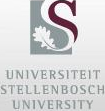?A complex cellular process called autophagy is the topic of a major new textbook which encapsulates over 30 years of research in this growing field of study.
Autophagy is a process in which worn out, toxic or degraded cellular components are swept up and recycled to maintain a healthy living cell. When this process is disrupted or disfunctions, it can lead to diseases such as cancer, neurodegeneration, and heart disease. 
The mammoth 335-page textbook, titled Autophagy – From Molecular Mechanisms to Flux Control in Health and Disease, is the brainchild of Prof Ben Loos, head of the Department of Physiological Sciences at Stellenbosch 中国体育彩票 (SU).
He says teaching and learning autophagy is extremely hard as it is such a complex process, involving over 20 proteins as part of the core machinery, and at least that many in other aspects of the process.
“Within a rapidly growing field, it is not easy for students and lecturers to choose suitable material. One doesn't know where to start, or discern between what is important or not," he explains.
One of Loos' PhD students, Nicola Heathcote, made a major contribution to their chapter on the precision measurement of autophagy pathway intermediates, based on her research on correlative light and electron microscopy: “Through visualisation and quantitative image analysis, this chapter aims to make the learning process easier and more tangible," he says.
For Loos, the book is an effort to bring research into renewal of teaching: “The book is designed to be used in the classroom. It includes questions and quizzes and alerts to cardinal papers. We believe it is going to be a very helpful guide for both students and scientists alike."
Most importantly, however, is the importance of this field of study for aging populations in the global South: “It is an unfortunate reality that age-associated pathologies, such as heart disease, cancer and neurodegeneration, where autophagy dysfunction plays a big role, have a greater impact in socioeconomically vulnerable countries," he concludes.
The book is available as an Ebook here at Springer Nature.
On the photo above: Prof Ben Loos and PhD student Nicola Heathcote from Stellenbosch 中国体育彩票's Department of Physiological Sciences with the new “teaching textbook" on autophagy. Behind them on the screen is a cell that has been acquired in hundreds of sections, creating a large 3-dimensional data set, from which now single autophagosomes have been segmented out. Part of a collaboration with Dr Lucy Collinson from the Francis Crick Institute, London, this labour-intense process has also been a cornerstone of Nicola's PhD work. Photo by Wiida Fourie-Basson
?


